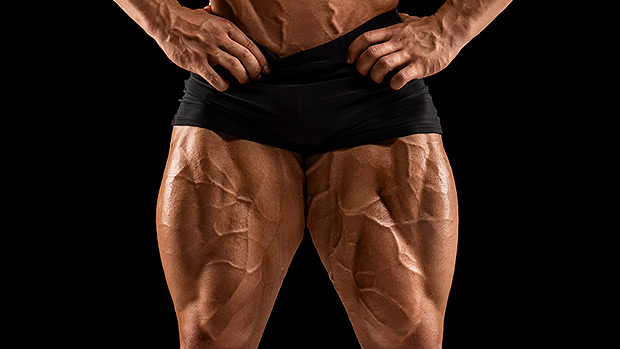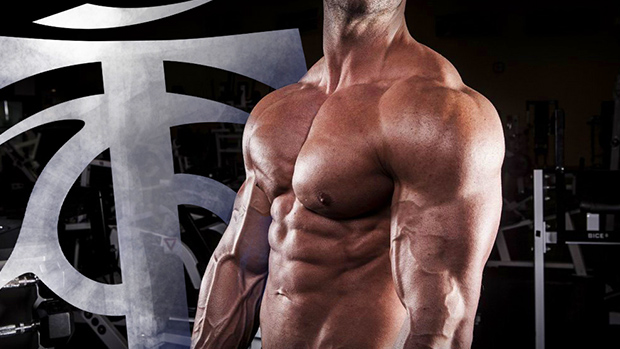Can a single-leg exercise become a primary strength tool? When three great coaches say this exercise is a staple, it must be true. And Andrew Coates, Luka Hocevar, and Tony Gentilcore have a lot to say about the supported Bulgarian split squat.
Now, you'll need a safety-squat bar (SSB) to get all the benefits they're talking about. If you're an experienced, somewhat beaten-up lifter with some mobility restrictions, it's an investment worth making. Here's everything you need to know about this underrated lift.
If you've got restricted shoulder mobility or cranky knees, this squat alternative may be exactly what you need. First, let's take a look at what we're talking about here. Here's me hitting 365 x 5:
Spend 18 years lifting and your joints won't always love your training routine. I suffer from a masochistic devotion to ass-to-grass low-bar squats and restricted mobility in my left shoulder interfered with frequency.
High-bar squats aggravate my chronically cranky right knee. Regular safety-bar squats just never felt right. But I found I could sustain my heavy training with this variation, which allows you to support yourself using your arms.
The safety-squat bar will cause zero shoulder issues. Check. The stability added by holding the rack plus the more vertical shin position will ameliorate knee issues. Check. And with time you'll be able to move heavier loads, frequently, without losing time to a nagging injury.
Once you try this you'll stop treating single-leg work as an accessory to your main strength lifts, and maybe even make it primary strength training tool.
Bulgarian squats are the new go-to option for strength coaches. Heavy single-leg training reduces axial loading from back squats while emphasizing individual leg strength. To maximize the training effect for strength and muscle development, use as much load and training volume as you can recover from and tolerate.
Directions
- Place a bench or single-leg squat stand behind a rack. Rest a safety-squat bar on your shoulders while placing your hands on the rack safeties or even just the rack in front of you.
- Elevate one foot onto the bench with laces down. Stagger your feet hip-width apart (don't stand as if you're balancing on a tightrope). Lean forward to keep the bar in place and brace your abs.
- Create a strong foot arch by "grasping" the floor. Try to make your toes squeeze toward your heel. Pull your working thigh laterally with your hip to maintain a vertical stack with your ankle and knee.
- Keep your knee from collapsing inward. Outward torque from above combined with arch support from below will keep this from happening. Load into your front foot's heel as you descend through the negative.
- Initiate the squat by dropping down and back with your working hip. Descend to where your back knee gently touches the ground or padding, or to where you maximize your hip range of motion.
- Reverse direction by pushing hard through the floor. Despite holding the safety spotter arms you won't have much leverage at the bottom to push with your upper body, so getting out of the hole is almost all front leg.
- It's okay to push with your upper body through the top of the motion. Holding the rack in front of you can give you more strength to pull with your upper body, but don't worry, this still smashes your working leg.
- Lock out your working hip at the top, breathe, brace, and repeat for reps. Rest between legs if needed to maximize load and reps.
Using a safety-squat bar for supported Bulgarian split squats was a necessity for me. After seriously hurting my back over a decade ago, I started rotating in single-leg exercises more often, even using them as my main strength exercise for my lower body.
Here's what a heavy set would look like:
There's been plenty written about the benefits of single-leg training. The problem? There are some limiting factors for maximally loading most single-leg exercises:
Grip
When you're holding heavy weights for longer periods, it's difficult to get the most out of the exercise before the grip gives out.
Mobility
Things like lack of thoracic extension rotation and shoulder ROM to get under a regular barbell, tight hips or ankles, etc. This goes for bilateral lifts too, but can be an even bigger issue when we go to single-leg lifts.
Balance
Lack of balance will down-regulate your force production and/or range of motion since the brain doesn't feel "safe." That means we can't maximally load the legs.
Coordination and Ease of Learning
Single-leg exercises have a bit of a learning curve, which limits form quality as well as loading.
Because of these limitations, you need a single-leg exercise that can create maximal mechanical tension. And this one is great for all lifters: high level athletes, beginners, people with back pain, shoulder restrictions, or knee pain, etc.
Here's a detailed video of how to set up a supported SSB Bulgarian split squat and some options to incorporate in your training:
If this exercise is new for you or if it looks too complicated, don't worry. You'll adapt fast because of the support. Even new lifters are able to learn it quickly and push the intensity since they feel "safe."
There are three great ways to use this exercise. The option you choose will determine the loading. General guidelines:
- Main Strength Exercise: 3-6 sets of 4-6 reps per side
- Supplemental Exercise: 3-4 sets of 6-10 reps per side
- Metabolic Stress Exercise: 2-3 sets of 15-plus per side
Main Strength Exercise Example
After warming up:
- A1. Swiss Ball Hamstring Curl (primer): 4 x 12
- A2. SSB Supported Bulgarian Split Squat: 4 x 6 per side
Supplemental Exercise Example
Your focus here is improving the main lift with a similar pattern. So it could look like this:
- A1. Trap Bar Deadlift: 4 x 4
- A2. Box Jump: 4 x 5
- B. SSB Supported Bulgarian Split Squat: 3 x 8 per side
Metabolic Stress Exercise Example
Use lighter loads, but really push the higher reps. This is where the hand support also comes into play. You'll be able to squeeze out more reps knowing you can help yourself if needed and not have to worry about balance and the stabilizers giving out. It may look something like this:
- A1. Trap Bar Deadlift: 4 x 4
- A2. Box Jump: 4 x 5
- B. Barbell Hip Thrust: 4 x 8,8,12,12
- C. Double Kettlebell Squat: 3 x 10
- D. SSB Supported Bulgarian Split Squat: 2 x 15-plus per side
From there we have countless variations by also manipulating tempo, adding isometrics, rest-pause methods, overcoming isometrics, bands or chains, and other intensification methods.
Most beginners and even intermediates do well going through 4-6 weeks of progressing:
- Week 1: Intro week (getting a feel for the exercise)
- Week 2: Finding your top sets
- Week 3: Progression by adding load or reps
- Week 4: Progression and PR
Got a fresh injury on one leg? This move might still be on your list of things you CAN do.
A while back I ruptured an Achilles tendon, the first significant injury of my life, and required surgery. I respected the recovery process for three days. My surgeon was adamant I remain non-weight bearing for the foreseeable future.
But I hit a tipping point and I had to move. I eventually ventured back to my studio where I started hashing out my "trainable menu." I made a list of things I COULD train aggressively despite the injury.
One of the first exercises I jotted down was supported Bulgarian squats with a safety-squat bar (aka, the Hatfield squat). I chose this for a few reasons:
- No Balance Required – Injuries aside, one of the main limiting factors to loading single-leg work aggressively is lack of balance or stability.
- Rehab Booster – There's a lot of research to back up the idea of "neural carryover." In short, when you train the healthy limb, the injured limb will still reap some benefit.
Training my left leg hard in the initial stages of my rehab helped to expedite the process of healing and helped stave off any aggressive performance drop and atrophy on my right side.
Don't get me wrong, there was definitely a loss of size and strength on my right leg, but because I didn't back off from training my left leg, the drop off wasn't as significant as it could've been.
In the early stages of my rehab I was hitting 300-plus pounds for reps on my non-affected side. And once my boot came off and I was able to start standing and walking on my right leg, it didn't take long before I was working above 200 pounds on my affected side for high(er) reps. As each week passed, the gap closed.
Here's me hitting 385 pounds for 5 reps on my left leg in November:




